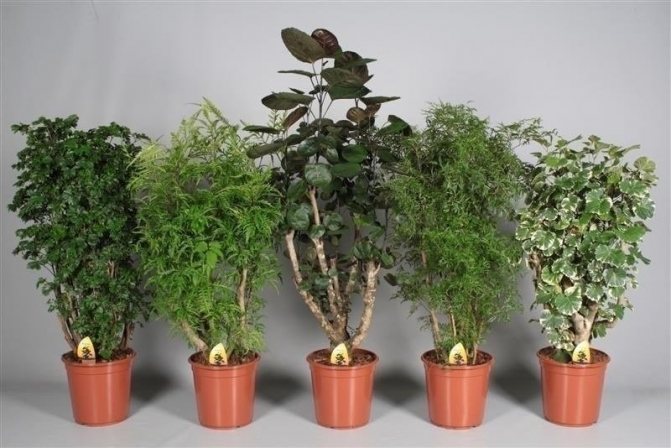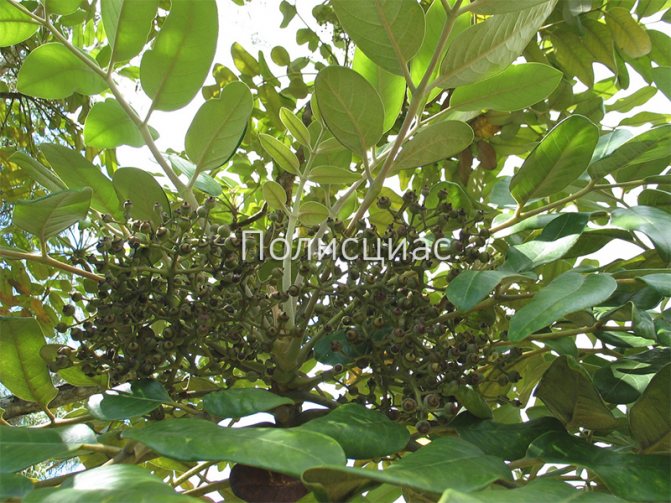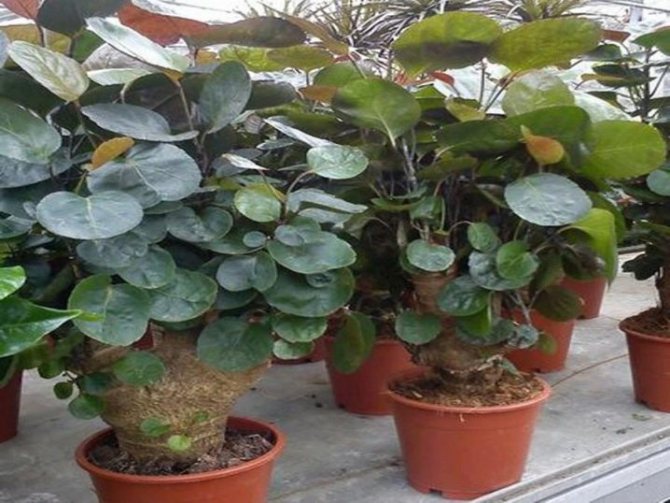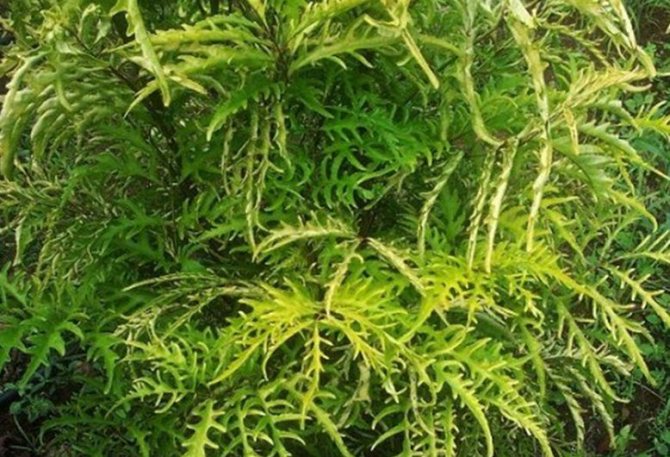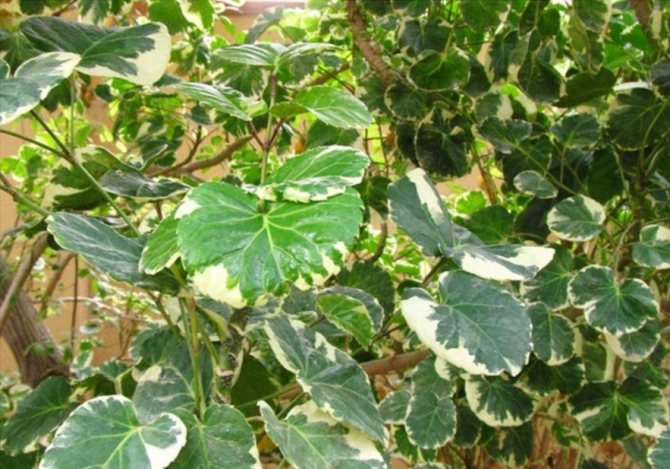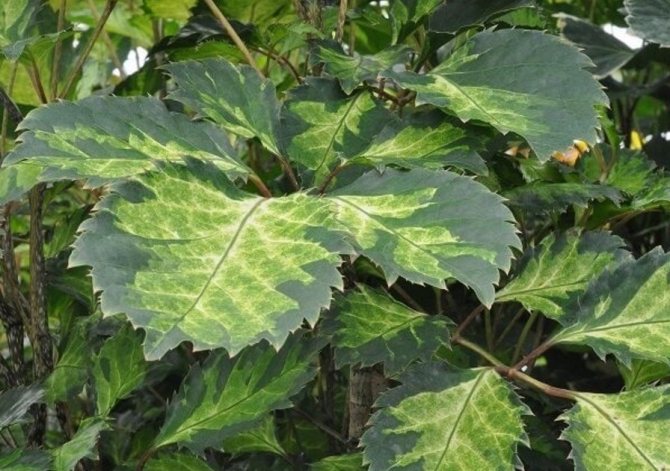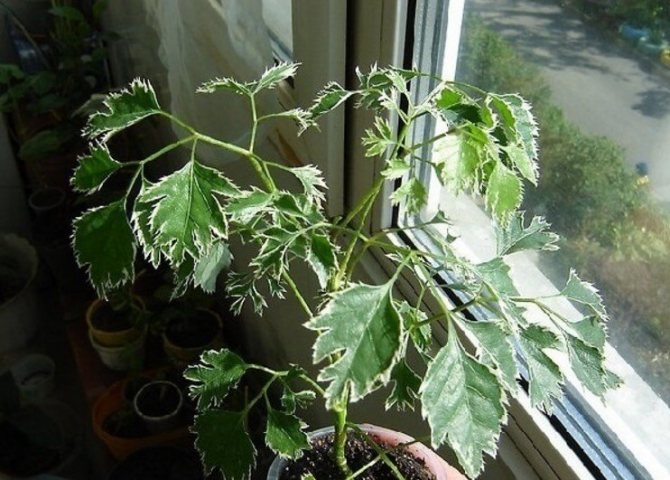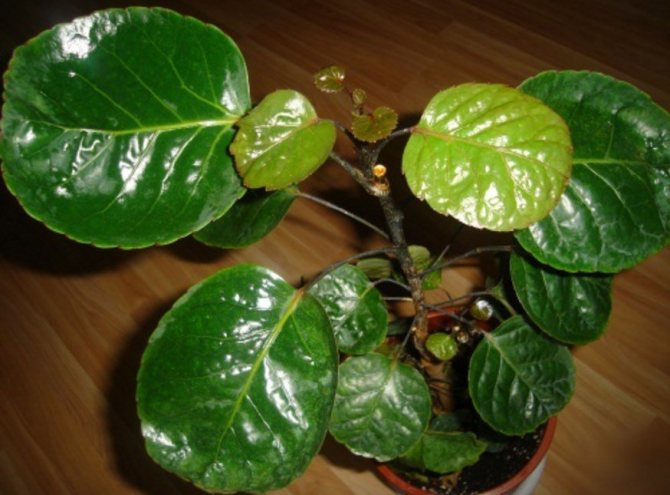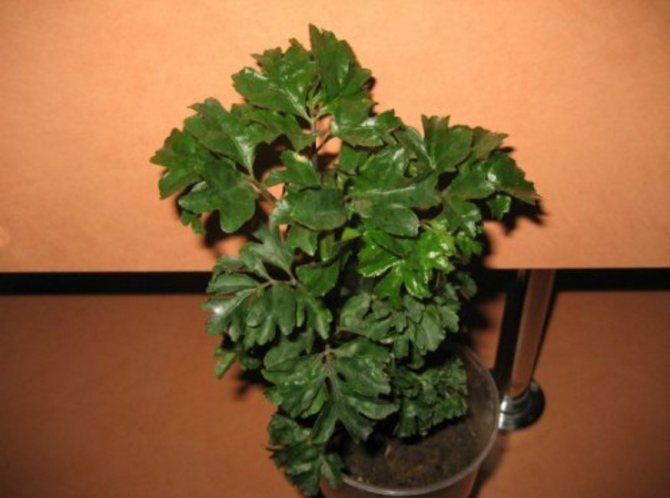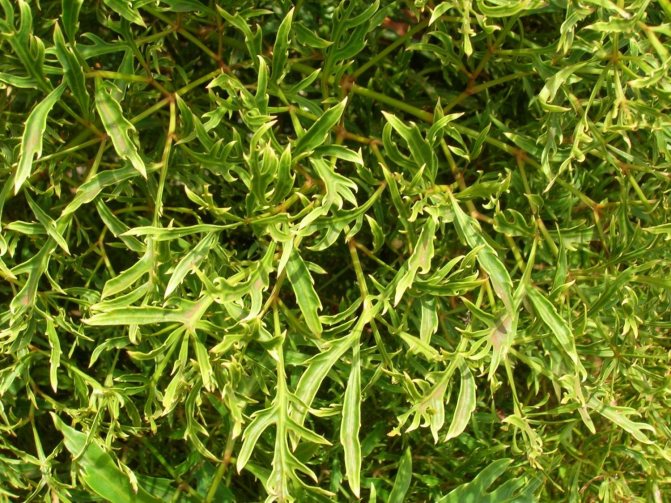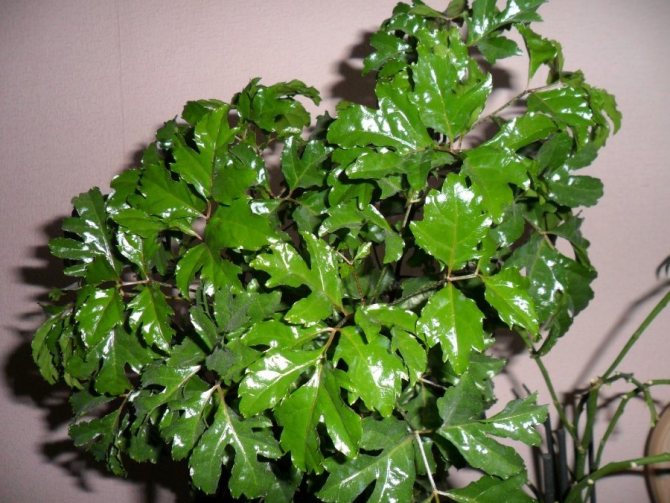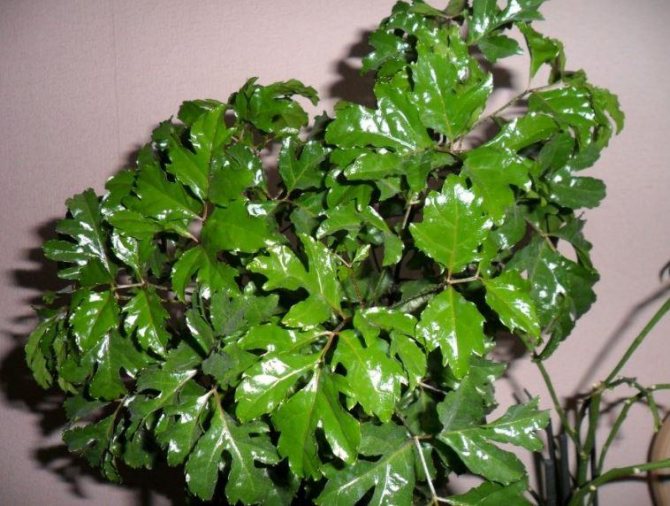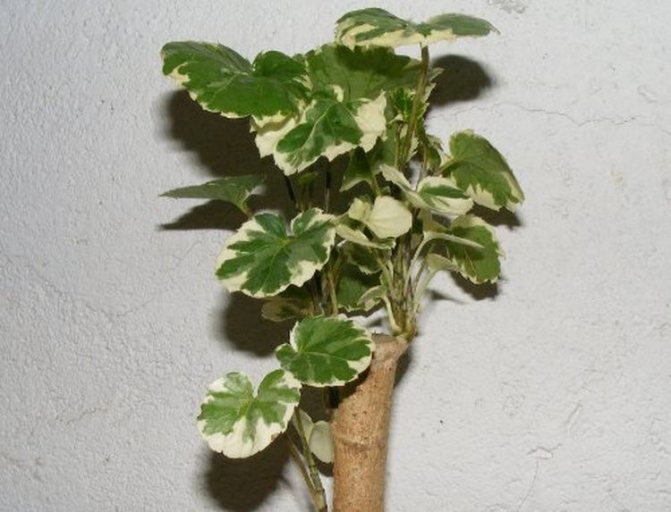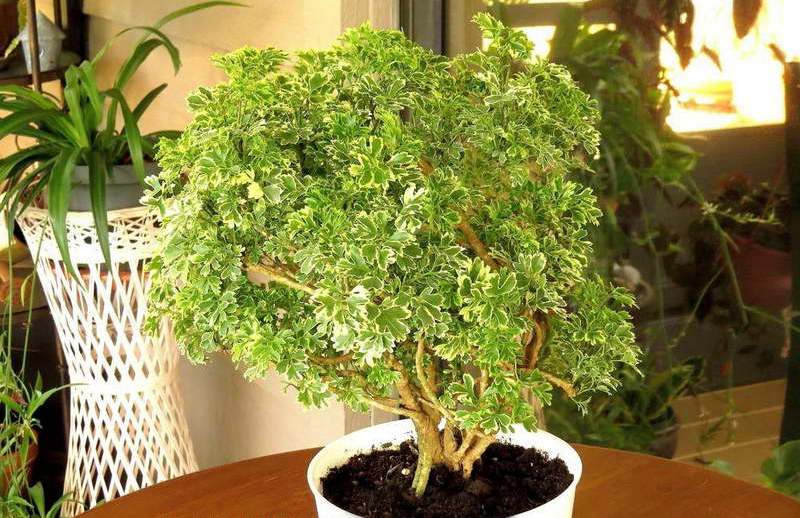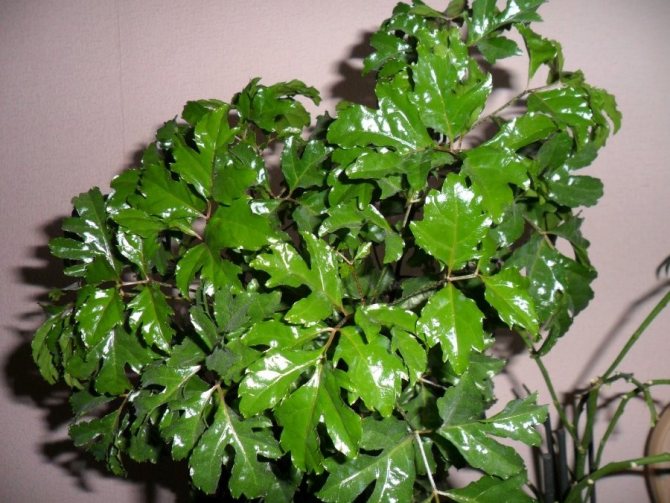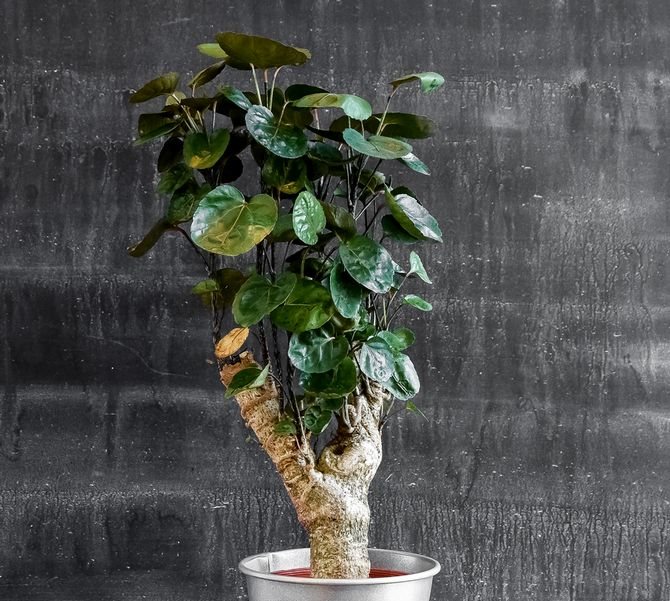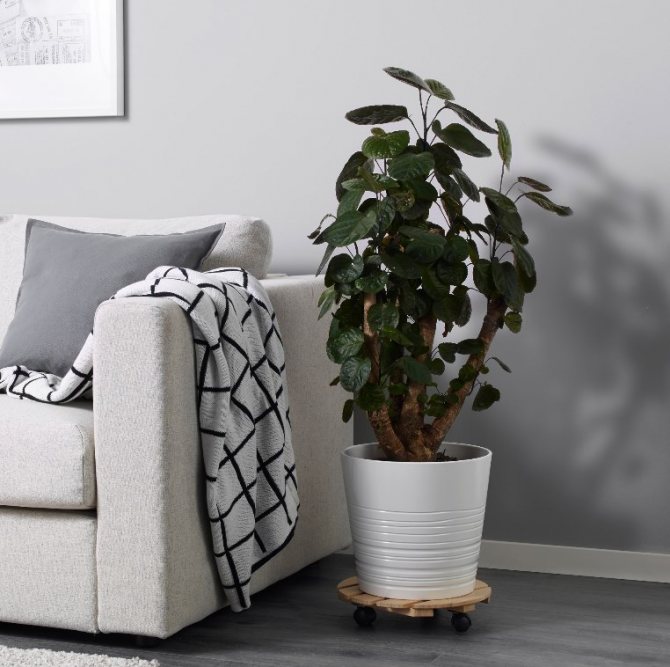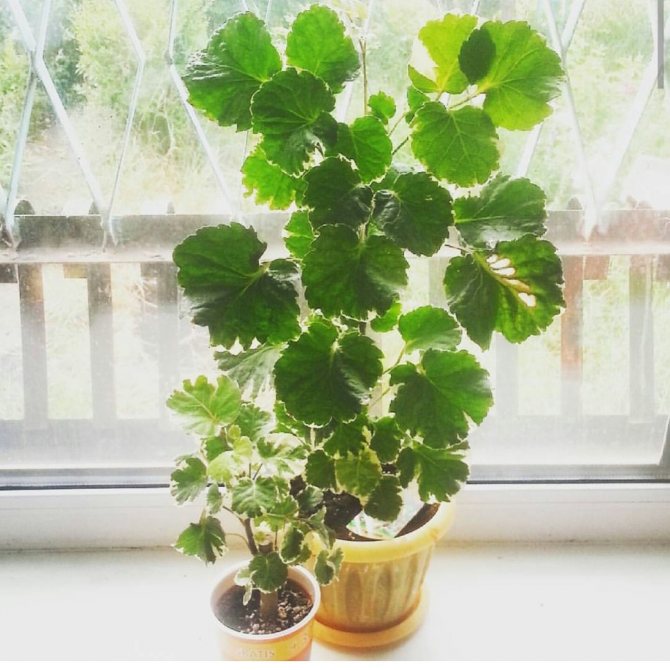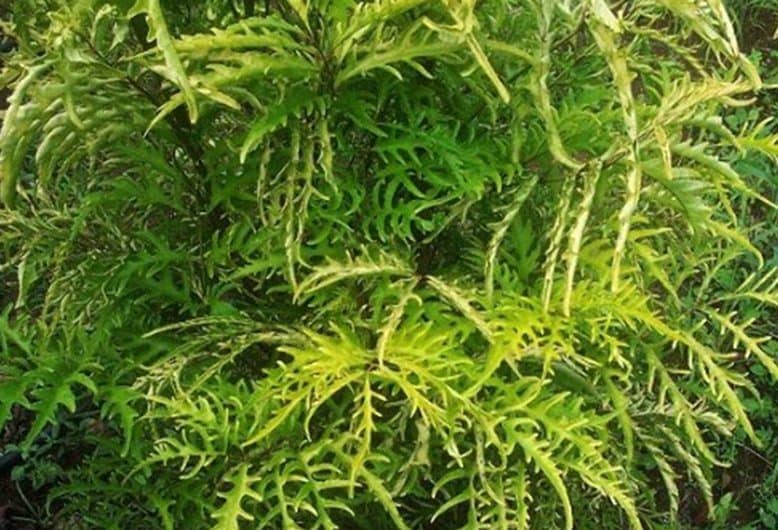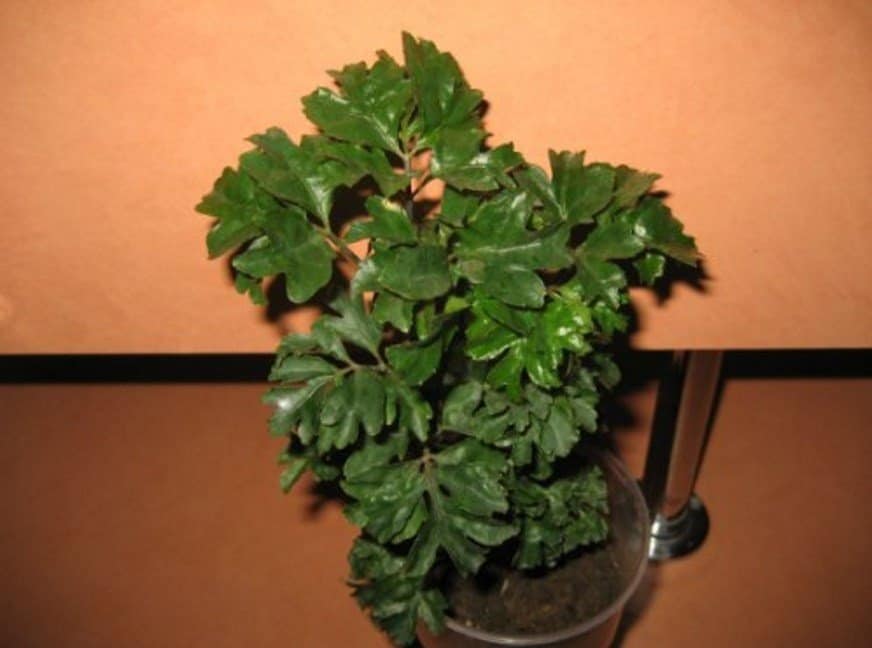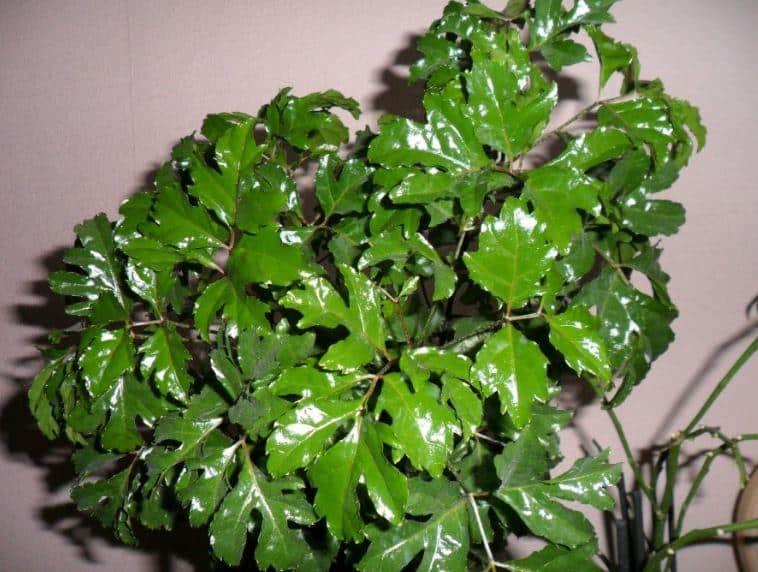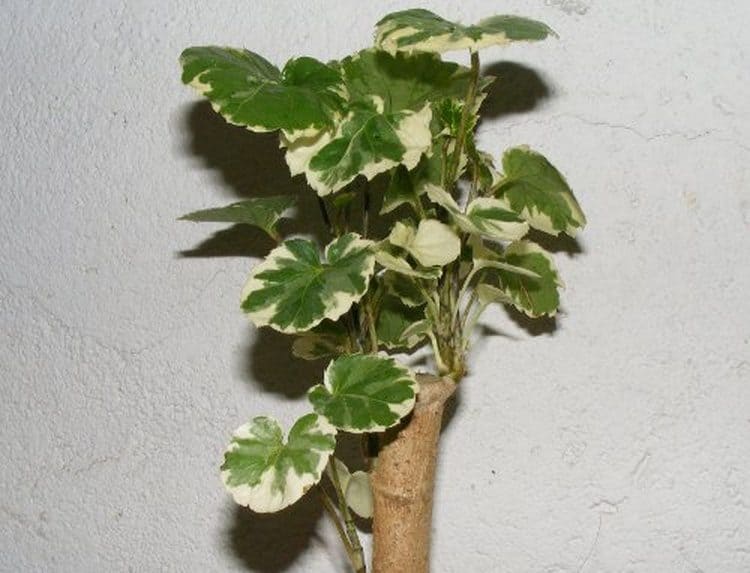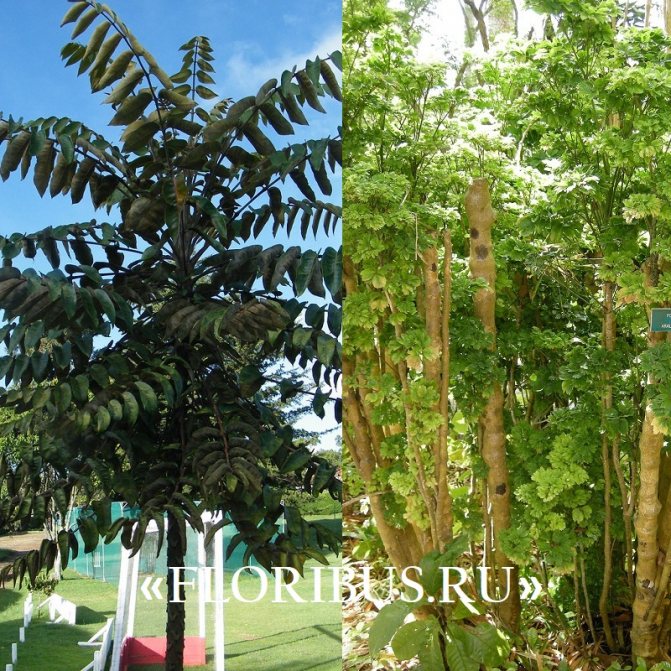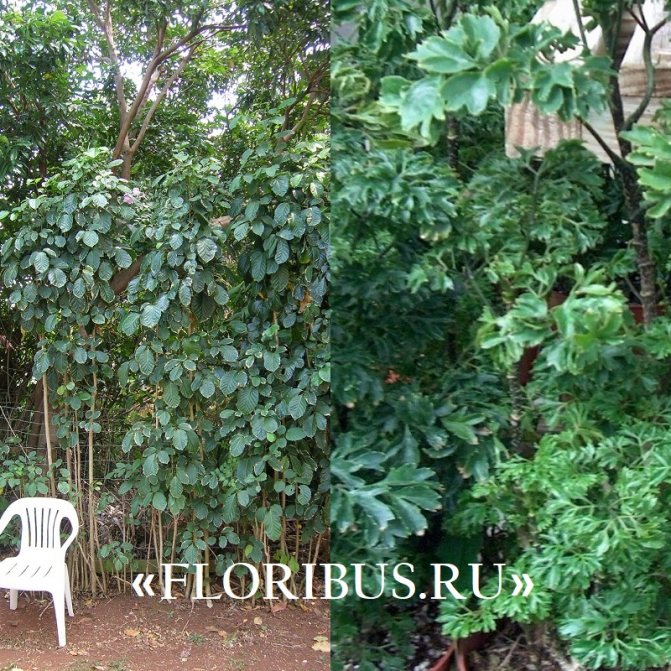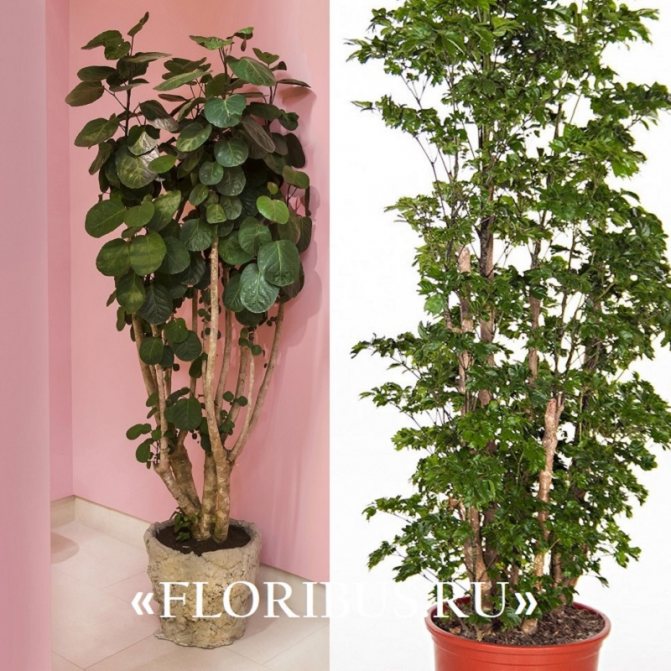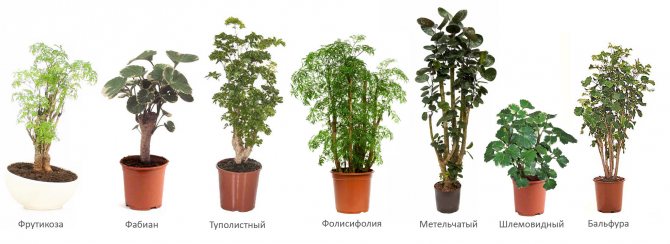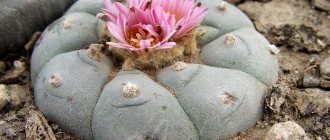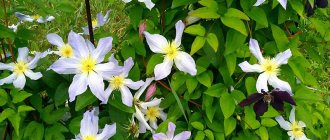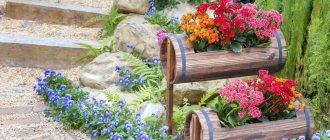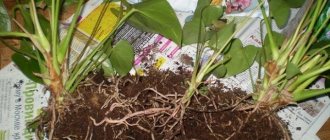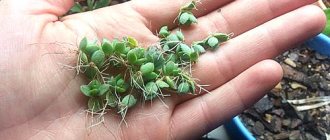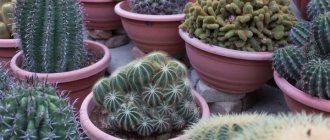Poliscias is a prominent representative of the Araliceae family. The plant was brought to us from the humid forests of tropical Asia. It is an evergreen tree with decorative leaves, for which its various varieties are valued. In our climate, Poliscias can only be grown as a houseplant. Caring for a policeman at home can be fraught with some difficulties, but in the article we will analyze all of them, which will greatly simplify your task.
Content
- Description
- Caring for a policeman How to look after
- Watering and feeding
- Police transplant
- Reproduction of the polisias
- Policeman helmet
Planting and caring for a police officer
- Bloom: at home is not observed.
- Lighting: bright diffused light for variegated species, light partial shade for green-leaved species.
- Temperature: during the period of active growth - 20-23 ºC, in winter - 17-20 ºC.
- Watering: in the warm season - moderate, but frequent, as soon as the top layer of the substrate dries. In winter, the soil is watered 2-3 days after the top layer of the substrate has dried.
- Air humidity: increased. The plant requires regular leaf spraying or keeping on a pallet of wet pebbles.
- Top dressing: from April to October - once every 2 weeks with mineral fertilizer for decorative deciduous plants, and from October to April, fertilizers are applied only once a month.
- Rest period: not pronounced, but in winter vegetative processes slow down significantly.
- Transfer: late March or early April. Young plants are transplanted annually, adults - once every 2-3 years.
- Reproduction: stem and apical cuttings, less often seeds.
- Diseases: root rot.
- Pests: scale insects, aphids, mealybugs, root nematodes.
Read more about growing a policeman below.
How does it multiply
The bush can be propagated by seeds, cuttings, pieces of rhizomes. The method of propagation by seeds is difficult to implement, or rather, even impossible at home. A greenhouse with special conditions is required.
An adult shrub is best propagated by cutting its upper parts in spring. The shoot should be at least 15 cm. Instructions for further actions:
- Treat the cut cuttings with a phytostimulant or activated carbon. After dry it.
- Place the scion in the ground and cover it with glass or foil.
- Place it in a room with a temperature of 25 ° C.
- Carry out periodic ventilation and moisten the soil. If all the conditions are met, you can wait for the first roots to appear 30 days after planting.
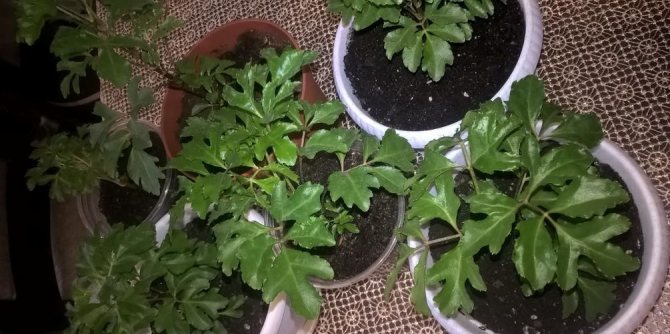
Reproduction
Important! Polizias is considered to be a poisonous plant. Its juice can damage the skin. When working with a flower, you need to wear gloves. After the procedure, it is recommended to wash your hands in soapy water.
Polisias flower - description
The Poliscias has a branched root system that spreads both vertically and horizontally. The shoots of the plant, covered with light brown bark, are also highly branched. Gradually, they become lignified, but remain flexible even with age: they are very difficult to break, but they can be tied in a knot and then straightened.Over time, the lower part of the policeman is exposed. Alternate light or bright green leaves, located on short petioles, can be paired-pinnately dissected, triple pinnate or rounded, lobed, leathery or simply glossy. The plant has varieties popular in indoor culture with variegated foliage. In young plants, the leaves are usually simple, but as they mature, they begin to divide into segments.
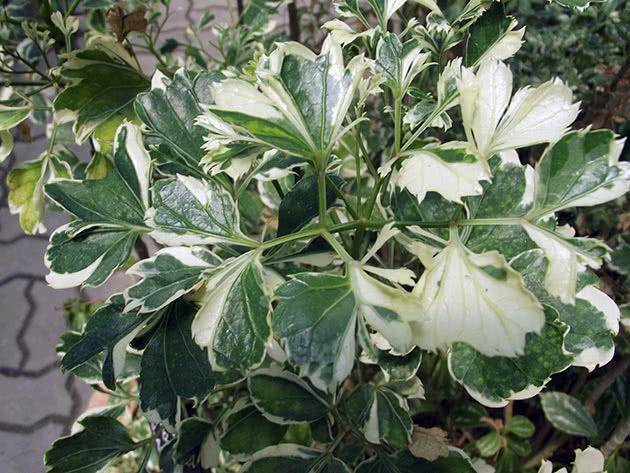

In the photo: Motley Police
The poliscias plant blooms with medium-sized apical umbrellas or heads consisting of small whitish flowers, but at home flowering occurs very rarely.
What does it look like, which family it belongs to
Poliscias is considered an evergreen plant belonging to the Araliaceae family. This plant has a branched root system. Flexible stems are covered with light brown bark. The stems are not brittle, lignified. They can be tied in a knot and then straightened with ease.
Leaves are attached with short stalks to the branches. They are bright green in color and vary in shape. There are types of this plant with rounded, lobed, narrow or pinnately dissected leaves. The leaf plate can be leathery or glossy. In addition, variegated varieties come across. The whitish flowers of the plant are collected in capitate inflorescences or in inflorescences in the form of umbrellas at the ends of young shoots. In nature, Poliscias is found in the humid Asian tropics, the Pacific Islands and Madagascar.
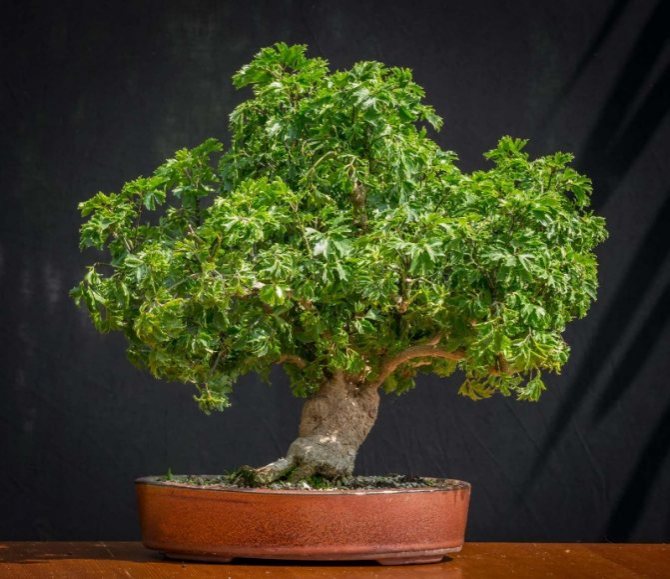

Polisias
Caring for the police at home
Caring for the police in the apartment
The poliscias indoor flower, like its wild relatives, loves bright diffused light, both in the season of active growth and in winter. It grows well in light partial shade. Variegated varieties more light is needed to maintain the original color than plants with green leaves.
- Motherwort: properties and contraindications, planting and care
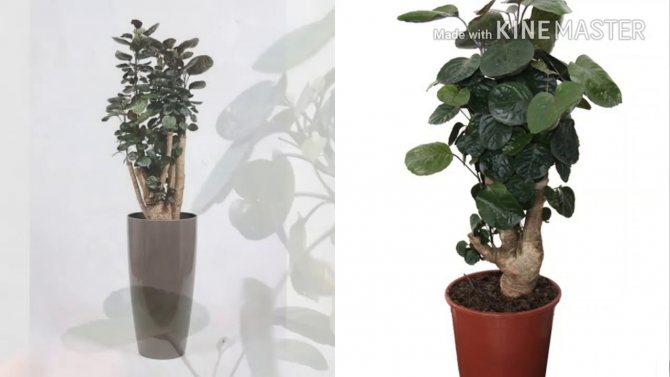

The most comfortable temperature for a policeman during the growing season is 20-23 ˚C. In winter time it is advisable to keep the room policeman away from heating devices at a temperature of 17-20 ˚C. If the flower pot is on a windowsill, protect it from the hot air rising from the radiator with glass or plastic, and put a piece of styrofoam under the pot so that the roots of the plant do not freeze.
Polisias loves fresh air, so airing the room is mandatory at any time of the year, but drafts are contraindicated for the plant.
Watering and feeding the policeman
Poliscias is watered often, but in moderation, after waiting for the top layer of the substrate to dry out in the pot. In winter, after the substrate dries to the indicated depth, it is advisable to wait another 2-3 days before watering.
How to grow ivy in an apartment
A policeman in need of high humidity must be regularly sprayed. And they watered and sprayed the poliscias with settled water a little warmer than room temperature. Hard water can be softened by adding a few drops of lemon juice or citric acid crystals. In order to increase the humidity of the air, containers with water are placed around the policeman. You can put a pot with a plant on a pallet with damp pebbles or expanded clay so that the bottom of the pot does not touch the water. If you have an aquarium, place a police officer next to it. From time to time, it is advisable to wash the plant under a warm shower.
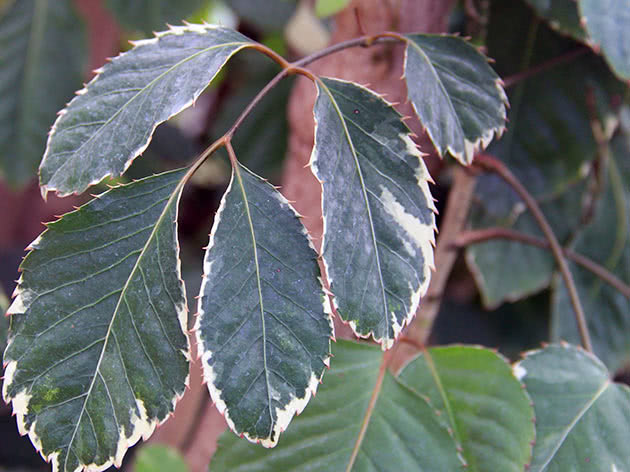

In the photo: Growing a policeman at home
Fertilize the indoor policeman from April to October, twice a month, with universal mineral fertilizers for decorative leafy indoor plants, and from October to April, top dressing is applied only once a month. Polisias is also fertilized with organic solutions, which are sold ready-made in specialized flower shops.
Police transplant
Young policemen are transplanted annually, and adults - once every 2-3 years. It is better to transplant in the spring, at the very beginning of active growth. The substrate for the poliscias is mixed from equal parts of coarse-grained river sand, humus, peat, turf and leaf land. A thick layer of expanded clay or clay shards is placed at the bottom of the pot.
- Motherwort: properties and contraindications, planting and care
The plant is transplanted by the transshipment method, for which the flower is well watered in advance, so that it is easier to remove it from the pot along with an earthen lump on the roots. Poliscias is transferred into a new pot, after which the remaining space is filled with a fertile substrate. After transplanting, the plant is watered and not fed with fertilizers for at least a month. When the policeman begins active growth, his shoots are pinched to stimulate branching.
Poliscias grows well in hydroponics.
Reproduction of the polisias
Usually, the poliscias at home is propagated vegetatively: by stem and apical cuttings. However, the process of cuttings, which in other plants occurs without any difficulties, is not easy in the case of the poliscias, since the cuttings of this plant take root hard and for a very long time. Sections of cuttings separated from the mother plant are powdered with coal powder, dried at room temperature, planted in a mixture of equal parts of peat and coarse sand and covered with a transparent cap to create increased air humidity. They contain the cuttings at a temperature of 25 ˚C, airing in the mornings and evenings, moistening the soil and spraying the cuttings as needed. Rooting lasts at least a month.
Reproduction
Reproduction of the Poliscias at home is often accompanied by certain difficulties. Its cuttings root poorly, and seedlings obtained from seeds grow very slowly. But first things first.
It may be interesting: Monstera - caring for a beauty with a scary name
Cuttings
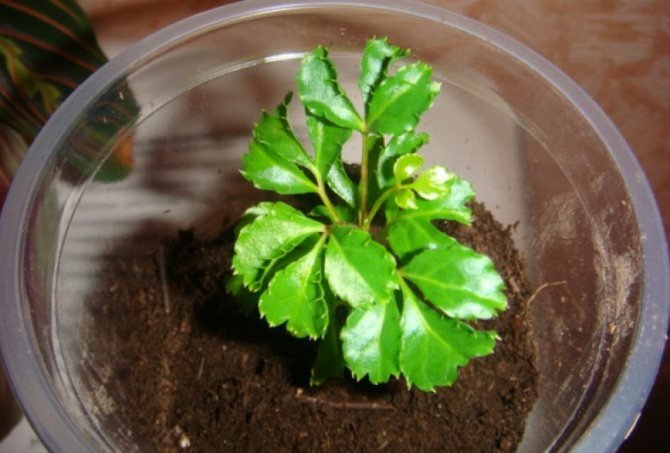

Cuttings are cut in spring and summer, cutting off the apical shoots. The stalk should be about 15 cm long, with three internodes. The cut site is treated with coal and root, put to dry for 3 hours, and then set at a slight angle into a wet mixture of peat and sand. The container is covered with foil or glass and placed in a warm place with a temperature of 25-26 ° C. In the greenhouse, it is necessary to constantly maintain high humidity. At the same time, even if all the conditions are met, the result may not be obtained.
Growing from seeds
Seeds should be sown in spring, in a container with light soil, lightly cushioned with earth. The container should be covered with a lid or foil and placed in a dark place with a temperature of 19-25 ° C. After sprouting, the film can be removed and the container can be moved to a more illuminated place. As soon as 3-4 leaves appear on the shoots, the seedlings can be planted.
Propagation by root pieces
The rhizome of the old plant is cut into small pieces of 3 cm and inserted vertically into wet sand so that the top is at the level of the soil. In this case, you do not need to cover the container with anything. Water the sand as it dries.
Pests and diseases of the police
Diseases of the polisias and their treatment
All plant diseases arise from improper care. For example, from dry air, the leaves of the polisias turn brown at the edges and fall off. The plant may shed its leaves due to too high temperatures, dry indoor air or drafts. Sometimes this process accompanies the natural aging of the policeman, and then you have no cause for concern.
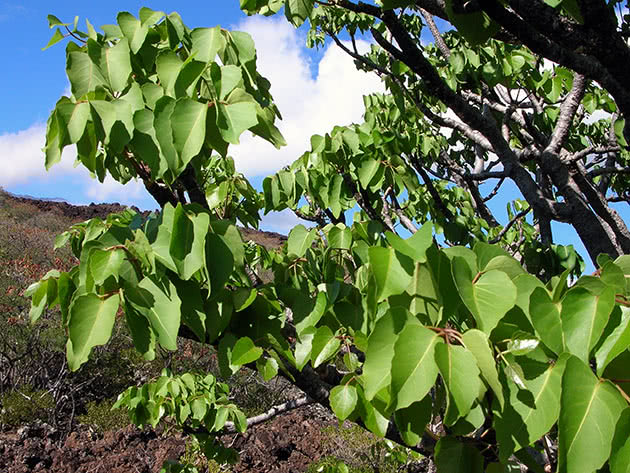

In the photo: Poliscias in the open field
Poliscias is very resistant to infections, but root rot can affect the flower from chronic waterlogging. What to do in this case? It is necessary to remove the poliscias from the pot, examine its roots, remove rotting areas with a sharp sterile tool, grabbing a part of healthy tissue, treat the wounds with crushed coal and transplant the plant into a fresh substrate.It is better to water the flower with Fundazole solution or a pale pink solution of potassium permanganate for a while, until you are sure that the plant has recovered.
Pests of the policeman and the fight against them
A weakened or newly transplanted plant can be invaded by pests such as scale insects, aphids and mealybugs. All these insects feed on the cell sap of the plant, biting through its leaves and young shoots. Sucking pests are destroyed with insecticidal preparations, but before processing, worms and scale insects must be removed from the policeman using a cotton swab dipped in alcohol.
How to grow a philodendron indoors - a guide
Then the plant is washed under the shower, allowed to dry, and only after that is it treated with Aktara, Aktellik, Decis, Fitoverm or another insecticide of a similar effect.
- Motherwort: properties and contraindications, planting and care
There are known cases of the defeat of the poliscias by root nematodes, due to which the plant slows down its growth, development, begins to wither and eventually dies. Fighting nematodes is almost useless, so hurry up to cut the cuttings from the policeman and root them. This is the only way to save the plant.
Types and varieties of polisias
We offer you an acquaintance with the species and varieties of Polisias, which are most often grown in room culture.
Poliscias helmet (Polyscias scutellaria)
An evergreen shrub-type plant with a curved, bonsai-like main trunk and erect, thin lateral branches. Numerous whole shiny leaves of this polisias, green with a white edging, are rounded in youth, but become three times dissected with age. Popular variety:
- Marginata - a plant with a wider white border along the finely toothed edges of green leaves.
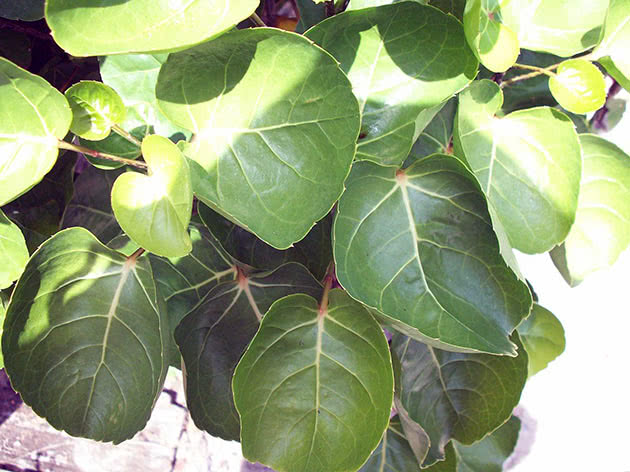

In the photo: Polyscias helmet (Polyscias scutellaria)
Curly poliscias (Polyscias crispatum)
A plant that forms low bushes. Its shoots are covered with leaves along their entire length. Bright green leaf blades with a white border around the edge, rounded in youth, eventually acquire a double and triple dissected shape and can become covered with yellow spots. Popular varieties of the species:
- Palapala - a plant with yellow spots on green leaves;
- Raffles Is a flexible plant with green leaves used to make bonsai.
Shrub Polyscias (Polyscias fruticosa)
The most attractive fern-like species grown in culture. On young shoots of the plant, you can see convex lentils. The leaves of the poliscias shrub are vaginal, twice and three times pinnate, with serrate-toothed leaflets of various shapes - from round to lanceolate along the edge. Unattractive small flowers form apical inflorescences. The most popular in culture are:
- Multifida - a shape with numerous linear-lanceolate and linear segments, ending with light villi;
- Filigree - variety with finely dissected lace leaves;
- Snow Flake - poliscias with a white border along the edges of large toothed leaves.
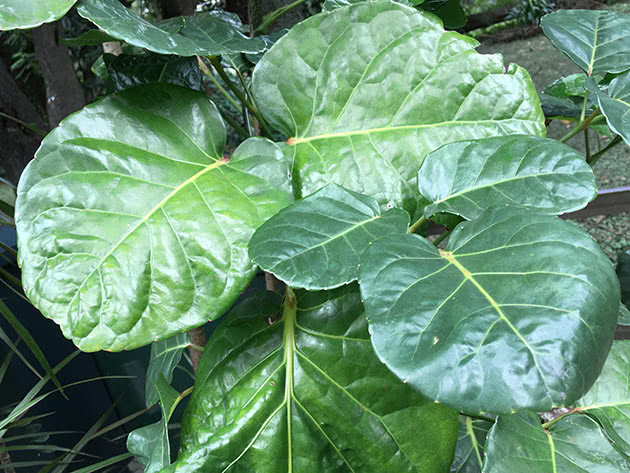

In the photo: Polyscias bush (Polyscias fruticosa)
Polyscias balfouriana
Or polisias balfuoriana - a weakly branching evergreen plant up to one and a half meters high with dark green pinnately dissected lobular leaves of an almost rounded shape, about 7 cm in diameter, with a white border and spots along the edges, located on long petioles. The best varieties:
- Fabian - variety with leaves of a dark purple hue;
- Pennockii - a plant with larger than the main species, gray-green leaves with silvery veins;
- Variegata - a plant with an uneven whitish border along the edges of the leaves.
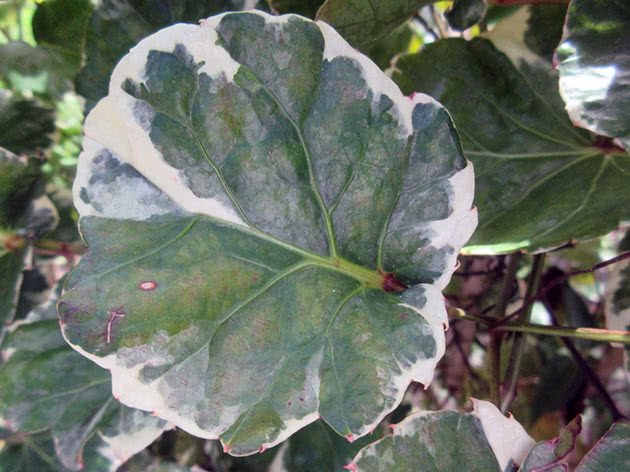

Photo: Polyscias balfouriana
Poliscias obtusa
A species with complex leaves, consisting of rounded three-lobed leaf plates, similar in shape to oak leaves, which is why in foreign literature this species is often called "Oak Leaf" (oak leaf).
Poliscias fern (Polyscias filicifolia)
Evergreen shrub with long green pinnately dissected leaves, 30-50 cm long, with densely spaced lobules, similar to fern frond.
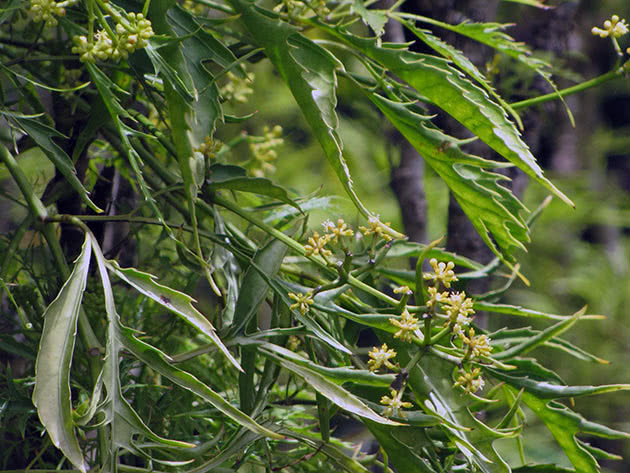

In the photo: Polyscias filicifolia
Poliscias paniculata (Polyscias paniculata)
A low-growing shrub with densely growing pinnately dissected light green leaves 15-20 cm long. The most interesting:
- variegata variety - a plant with a narrow golden border around the edges of the leaves.
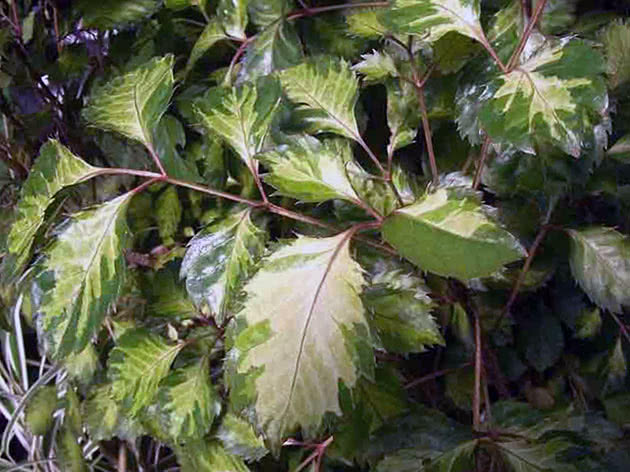

In the photo: Polyscias paniculata
Poliscias holly (Polyscias filicifolia)
A very spectacular low-branching species with large bright green openwork leaves, reminiscent of fern frond.
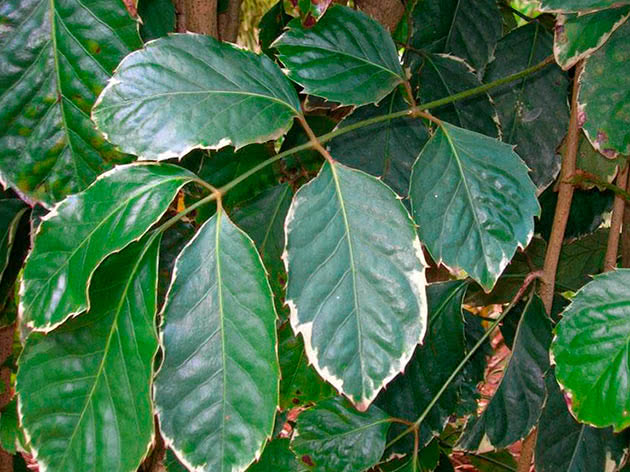

In the photo: Polyscias guilfoylei


